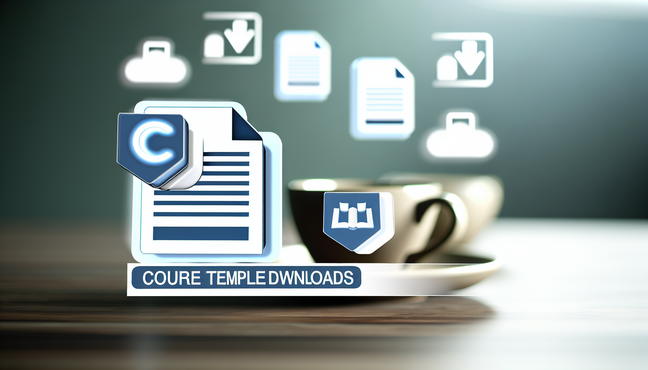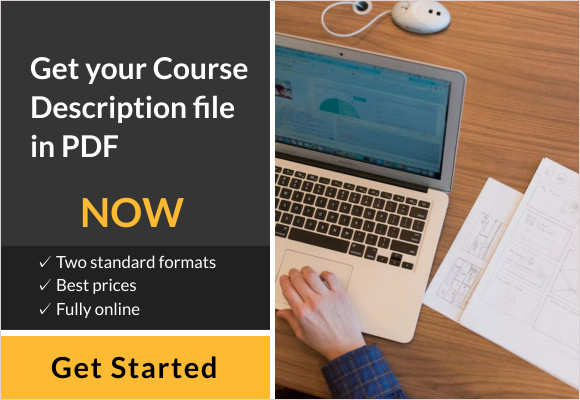Introduction to Course Descriptions
Course descriptions play a crucial role in educational settings, acting as essential tools for both instructors and students. They serve as a roadmap that outlines the aims and structure of a course, ensuring clarity in expectations and content delivery. For instructors, well-structured course descriptions facilitate meticulous instructional planning. This clarity not only aids in the setup of educational objectives but also helps in aligning lesson plans and assessments with the intended outcomes [Source: Course Description].
For students, course descriptions provide critical insights into what to expect, including essential topics covered, required skills, and learning outcomes. This transparency allows students to make informed decisions about course selections and prepares them for the challenges ahead by establishing clear pathways toward achieving academic goals [Source: Course Description].
Furthermore, effective course descriptions contribute to a more engaging learning experience. They highlight the relevance of course materials to real-world applications, inspiring students to actively participate in their education and view it as a stepping stone toward their future careers [Source: Course Description]. Thus, the importance of crafting precise and informative course descriptions cannot be understated, as they are foundational in enhancing both teaching strategies and student achievement in educational environments.
Essential Elements of an Effective Course Description
An effective course description is essential for attracting potential students and providing them with a clear understanding of what to expect. The following elements are critical:
- Learning Outcomes: Clearly articulate what students will be able to do upon completing the course. These should be specific, measurable, and aligned with the course content. For instance, rather than stating that students “will learn about marketing,” specify that they “will develop a marketing plan for a real business.”
- Course Objectives: This section should outline the goals of the course, providing context for the learning outcomes. Objectives help in setting expectations and guiding the instructional strategy. A well-defined objective might read, “To analyze the role of social media in modern business strategies.”
- Target Audience: Identifying your primary audience helps prospective students assess the relevance of the course to their needs. Describe the ideal participant, including their background, prerequisites, and motivations, which can enhance engagement. For example, “This course is designed for business professionals looking to integrate digital marketing strategies.”
- Course Format and Requirements: Include details about the course delivery (online, in-person, hybrid), duration, and any necessary prerequisites or materials. This ensures transparency and can prevent future dissatisfaction.
- Unique Selling Propositions (USPs): What makes your course stand out? Highlight any unique features, such as industry expert guest speakers, hands-on projects, or certifications that add value.
- Engaging Tone: Use a tone that resonates with your target audience. A professional course may require a formal style, while one aimed at creatives might benefit from a more casual approach.
For more detailed examples and templates on crafting compelling course descriptions, consider visiting Course-Description.com.
How to Customize Course Description Templates
Customizing course description templates is essential for attracting potential students and conveying the unique value of your courses. Here are some effective strategies for tailoring your course descriptions:
- Understand Your Audience: Begin by identifying the target audience for your course. Align the language and focus of the description to meet their interests and needs. Utilize clear, accessible language and address the specific benefits students will gain from enrolling.
- Highlight Learning Outcomes: Clearly outline what students can expect to achieve by the end of the course. Use action-oriented language to describe the skills they will develop and how these skills apply to real-world scenarios.
- Incorporate Engaging Content: Use storytelling techniques to make the description more engaging. Incorporate examples, case studies, or anecdotes that illustrate the relevance and application of the course material.
- Utilize Relevant Keywords: Integrate keywords that resonate with potential students searching for courses online. This not only enhances SEO but also ensures the description addresses the topics that are of interest to your target demographic.
- Make It Visually Appealing: Structure the description for easy readability. Use bullet points for key information, and consider incorporating images or videos that align with the course content. This helps break up large blocks of text and makes the information more digestible.
- Customize for Different Formats: If your course is offered in multiple formats (online, hybrid, in-person), make sure to specify this in the description. Tailoring the template to highlight format-specific elements can help potential students self-identify whether the course suits their learning style.
- Solicit Feedback: Prior to finalizing the course description, gather feedback from colleagues or potential students. This can provide insights into areas for improvement and ensure clarity and appeal.
For customizable course description templates, visit Course Description, where you can find resources tailored to meet your unique educational needs.
Best Practices for Writing Course Descriptions
When writing captivating course descriptions, several best practices can enhance your appeal and effectiveness:
- Understand Your Audience: Tailor your language and content to the audience you want to attract. Use industry-relevant terminology that resonates with the target demographic.
- Use Clear and Concise Language: Craft descriptions that are straightforward and free of jargon. Avoid long sentences and overly complex words; clarity is key in holding potential students’ attention [Source: Course-Description.com].
- Highlight Outcomes and Benefits: Clearly outline what students will gain from the course. Focus on skills learned, career opportunities, or potential certifications that could arise from completion [Source: Course-Description.com].
- Incorporate Engaging Elements: Use bullet points for clarity and to break up text. This helps in quickly conveying information, allowing potential students to grasp key details at a glance [Source: Course-Description.com].
- Tell a Story: Connect with students through storytelling. Frame the course as a journey, detailing what they will learn and how it applies to real-world scenarios or advancements in the field [Source: Course-Description.com].
- Include Keywords for SEO: Optimize your descriptions for search engines by including relevant keywords that potential students might use when searching for courses. Effective SEO practices can significantly enhance visibility [Source: Course-Description.com].
- Solicit Feedback: Before finalizing a description, get input from colleagues or previous students to ensure the course presentation resonates and clearly communicates its value [Source: Course-Description.com].
By embracing these best practices, you can create compelling course descriptions that not only capture attention but also drive enrollments effectively. For more insights, visit Course-Description.com.
Download Your Course Description Templates Now
Unlock the potential of your course offerings by downloading our thoughtfully crafted course description templates at Course Description. These templates provide a streamlined solution designed to minimize the time spent on content creation while maximizing engagement and clarity for your students. Each template is customizable, allowing you to tailor the descriptions to fit your unique style and course requirements.
By leveraging these templates, you can enhance the quality of your descriptions, ensuring they are not only informative but also appealing. This resource is especially beneficial for educators and course creators looking to efficiently produce compelling content without compromising on quality. Don’t miss out on this opportunity to elevate your course descriptions—visit Course Description now and start your download!










